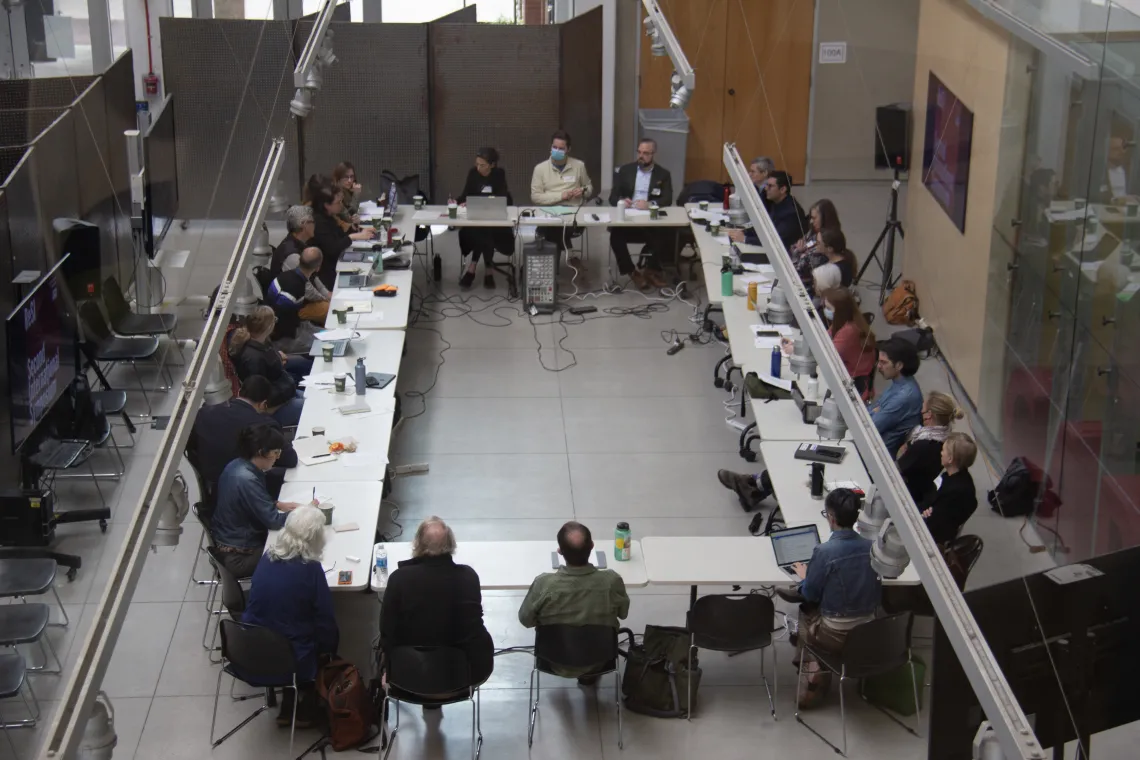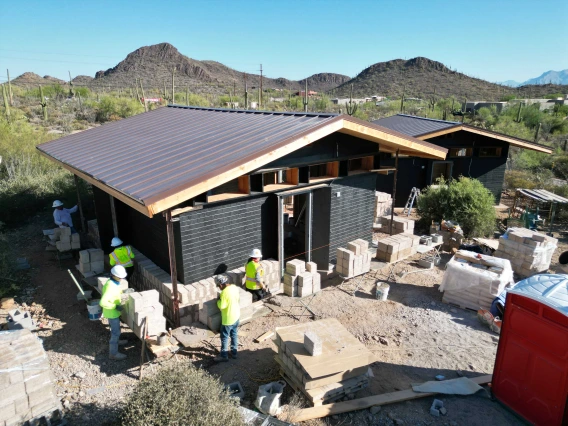International Symposium Unites Scholars, Artists, and Architects to Remember Spaces of Internment

An international network including historians, political scientists, artists and architects dedicated to the study and remembrance of internment sites around the world came together for the 2nd annual Remembering Spaces of Internment (ReSI) International Symposium.
Associate Professor Beth Weinstein is one of three individuals who co-founded ReSI, along with Aurélie Audeval, a historian at the University of Lille (IRHiS), and Nicolas Fischer, a political scientist at the Centre for Legal and Penal Institutes Sociology (CESDIP/CNRS). She took some time to discuss the goals of ReSI, the symposium, and the importance of studying internment sites around the world.
Where did your interest in internment come from?
My interest in this issue, as an architect and researcher, was sharpened when I learned about the history of Gordon Hirabayashi and the federal prison camp on Mount Lemmon that held conscientious objectors, including Jehovah’s Witnesses, Hopi, Quakers, and other individuals who refused to fight in World War II or, as in Hirabayashi’s case, to be “excluded” and “relocated” following Executive Orders 9066 and 9102. When I first learned about Japanese American internment camps in Native American lands within Arizona my head exploded just thinking about the multiple and overlapping forms of spatial separation, invisiblization, and the stripping of civil rights. By U.S. law, most of these spaces of internment were dismantled. Buildings were sold off, they were demolished, leaving little to no trace. As a result, the historical significance has been largely overlooked and not adequately discussed.
Why was ReSI established?
Nicolas, the political scientist, and Aurélie, the historian, and I met in early 2021 observing that a great deal has been thought and written about prisons, prison logics, carceral systems, laws and administration, and the spaces that go along with them. There has been very little theorizing about internment as a recurrent phenomenon. Obviously, a great deal of work has been done on the concentration and death camps from World War II, but little scholarship examines what were the pervasive logics for places of internment. For instance, how does space come into play? How were these places erased, disappeared, or hidden?
What are ReSI’s goals?
What we set forth to do is to begin addressing this gap in both theories, but also methods and objects of study. We approach this from an interdisciplinary point of view and invite folks who are looking at internment in all its forms, wherever it occurs, because it has been happening somewhere around the globe for the last hundred years. Somewhere, even today, there are people being interned. So, we held our first symposium in Nanterre, just outside Paris, in March 2023 and had presenters from various parts of Europe. That event, plus our gathering here in Tucson and next year’s (in France) are partially funded by the Transatlantic Research Partnership, a program of the FACE Foundation and the French Embassy.
What was the symposium’s goal?
This year was our second gathering, and the idea was to prioritize scholars who are based in the Americas. We had participants from Canada, the United States, Brazil, and we had speakers Zoom
in from Australia and Sri Lanka. We examined Japanese American, Japanese Canadian, and civilian internment. We discussed contemporary migrant detention. We looked at spaces associated with internment in France, Germany, and other parts of eastern Europe. Political scientists examined larger theoretical frameworks for understanding internment. Archaeologists uncovered details. Some scholars discussed memory of internment as it appears in literature. Artist-researchers shared photography and creative-activist initiatives; others analyzed architectural designs. The symposium was about building conversations across differing disciplinary perspectives and recognizing others’ works and different methods or practices.
Who was this year’s keynote speaker and what is the importance of her work?
Dr. Lynne Horiuchi is an architectural historian whose work has focused on Japanese American internment and the history of those spaces. She is actively engaged in raising awareness about this chapter of history, as are many attendees, several of whom are descendants of individuals who were interned. And I think one of the important things that Horiuchi is doing, and what I hope I’m contributing to, is to expand discourse; within architecture we tend to talk about aesthetically pleasing objects with individual, identifiable authors or firms as authors. But there are many other kinds of spaces and structures that are very important in our history as humans and as a society that have been excluded from architectural history or discourse. That is starting to change. There are people thinking about border walls, internment camps and many non-descript spatial conditions that should be examined theoretically, architecturally, materially, culturally, and historically.
How does your architectural expertise contribute to the broader discussion?
I am examining archival documents from the perspective of architectural and urban space, and I’m thinking about what role the architect or designer had in the production of these spaces. What role did the space and its material characteristics, its site and orientation, construction and de-construction contribute to the durational event of internment, to internees’ experiences, and to the space’s and event’s re-membering or forgetting? And so, my work as an architect has been to use all my tools to visualize what the razed architectures may have been and speculate about the spatial conditions based on what I can glean from archival documents. Architectural methods have been fundamental to constructing evidence, to painting a complete picture of these places, to filling gaps in the historical record.
What do you want external audiences to take away from this work?
The recurrent, systemic nature and perpetuation of places of internment. These places are always somewhere, a structural part of society, and we must be vigilant. The work of examining structures that we’ve inherited is so that we can find the cracks in the system where change is possible.



